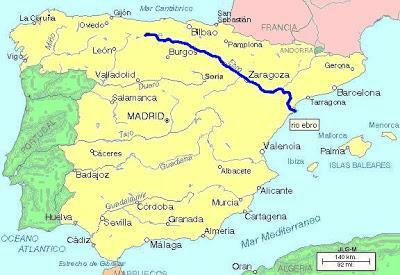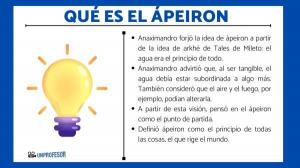Which is the largest river in Spain and why

Image: ariniños
The river Ebro is the largest in Spain. It travels, from its source to its mouth, the entire northeastern end of the Iberian Peninsula. The place where it is born is in Cantabria and the one where it ends is in the Mediterranean Sea, in Catalonia. In this lesson from a TEACHER we are going to comment which is the largest river in Spain and why, for this we will talk about the different provinces that passes, how it is growing section by section, the amounts of flow that it may have and, to finish, we will give you a brief summary of the activities carried out in he.
If you want to know which It is the largest river in Spain the answer is the Ebro river. It is born in Cantabria at about 880 meters of altitude in Campoo de Suso, from there it will cross two more towns in that province, such as Reinosa and Valderredible.
After his trip through this province, he enters Burgos from the Hoces del Alto Ebro y Rudrón Natural Park, passes through the Merindades and ends his journey through Miranda de Ebro. This is how you enter Álava, to enter La Rioja through Las Conchas (where in the past there would be a lagoon called Bilibio).
It will be the moment by which the river begins to meander (due to the low speed of the water in this section) crossing the municipalities of Haro, Labastida, Briones, San Vicente de Sonsierra, Elciego, Cenicero, Fuenmayor and Oyón. It will be at that time that the river passes through a provincial capital such as Logroño, in addition to serving as a territorial limit between La Rioja and Navarra, crossing a great diversity of municipalities such as: Viana, Agoncillo, Arrúbal, Mendavia, Sesma, Lodosa, Alcanadre, Sartaguda, Pradejón, Calahorra, Andosilla, San Adría, Azagra, Aldeanueva de Ebro, Roncón de Soto, Funes, Milagro, Villafranca, Cadreita and Afaro.
At this point it will cross Navarre and then enter Aragon, in this way after passing this it reaches Catalonia to flow into the Mediterranean Sea at the height of the municipality of Deltebre, in the province of Tarragona, in which it will create a large delta. This delta is protected by the Ebro Delta Natural Park, which is circumscribed in the terms of Tortosa, Amposta and San Jaime de Enveja.
In this other lesson from a TEACHER we will discover the parts of the river and their characteristics.
We can say that the geometric shape that we will find for this is triangular, in which in the north it delimits with the Cantabrian mountain range and the Pyrenees, to the west and south with the Iberian system and to the east with the Catalan coastal mountain ranges and the sea Mediterranean.
It occupies an area of 85,362 square kilometers, of which 84,414 belong to Spanish territory, 445 to Andorra and 503 to France. Therefore, we find that it occupies 17.3% of the territory within our country, occupying in many cases entirely the following autonomous communities such as: Cantabria, Castilla y León, Basque Country, Castilla La Mancha, La Rioja, Navarra, Aragon, Catalonia and Valencia.
In this other lesson from a TEACHER we will discover the main rivers of Spain with their tributaries.
Even if we are facing the largest river in Spain, we have to know in has a irregular character, that is to say, that at some times of the year we can see how it carries much less flow than usual. An example can be found at the end of summer, by which time we will see that it can carry a tenth of its flow. This can also be seen in the contribution of water that can be made in a month to the sea, which can vary from 440 to 2,896 square hectometres.
Within the swells of this, we have to know that the most important tributaries For this they are the ones on the left bank, the most important being the rivers Zadorra, Ega, Arga and Aragon (although we must know that it has 94 tributaries, among which we will find rivers, streams and streams).
For all these reasons, containment works have had to be undertaken in said river, such as the creation of the Ribarroja and Mequinenza swamps, which tries to control the floods of the river so that in this way no large overflows, although on some occasions the hand of man has not been enough and has overflowing.

Image: Slideshare
We have to know that during its course we will find that its waters will be used for certain activities, such as:
Industrial
We will find about 340 hydroelectric power plants scattered throughout the basin, three nuclear reactors (such as the Santa María de Garoña nuclear power plant and the two Ascó power plants).
On the other hand we will find minor industries that use the waters of this.
Agricultural
Used for irrigating the fields, we will find that about 6,310 square hectometres are used annually.
Supplies
About 319 square hectometres are used annually for other uses, such as 66 for livestock and 150 for the transfer to Bilbao and 55 to the Tarragona field.


![7 most important characteristics of ANARCHISM [SUMMARY + VIDEO!]](/f/fb851f2479781cf05c80b6cb73171541.jpg?width=300&height=200)
